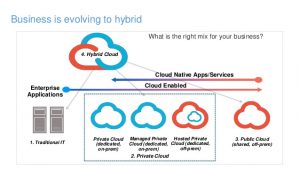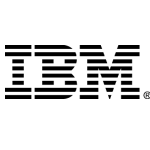Generic
Automated to the cloud
19/09/2017 | Written by: Think Blog Editor
Categorized: Generic
Share this post:
In these times of transformation, everything revolves around reconfiguring processes: welcome to the world of distributed clouds, cognitive applications and let us not forget smart possibilities for managing new environment using automated tools.
Companies are increasingly using multi-cloud strategies, to accelerate innovation and to give their businesses new forms. The average corporate organization already uses a minimum of five different clouds. Within the public domain, new value is generally being sought from specific suppliers, while the private cloud runs those items that distinguish the organization from a business perspective. Thus, the hybrid cloud is already a reality. And someone must manage this environment. This demands the right approach and adequate tools.
Download whitepaper: Hybrid IT Management >
Eco-systems
Digital business activities require speed, scalability and performance. This is made possible by dynamic eco-systems comprised of multiple clouds, with the optimum experience of both customers and end users always serving as the focal point. The once rather static production chain – from raw materials via R&D, marketing and sales to the ultimate retailer and the final customer – has evolved into more dynamic systems, with the final customer at the center. From a linked cloud environment, the customer has insight into or interaction with product development, suppliers, marketers, retailers, etc. Moreover, all parts of this new ecosystem are linked to one another.
Why is the new world hybrid? Because this combination of public and private cloud and personal systems offers everything that companies, CIOs and business leaders are looking for. A few examples:
- Anyone who wants to optimize his personal (existing) IT, who builds a self-service delivery of virtual machines in a private cloud, for example, and then adds software defined networking to this, along with storage and a hybrid cloud infrastructure. All this is automated, of course.
- Anyone who wants to add something to the existing IT cloud solution for a specific use, who turns to the cloud for backup, disaster recovery, migrating or porting an existing infrastructure. The cloud also offers a solution for specific items such as analytics, IoT, etc.
- Anyone who wants to construct new cloud-native mobile and web-based apps, who embraces the cloud due to its enormous flexibility: scalable, linkable, accessible and especially appropriate for developing software and services in a DevOps environment.
The new IT world is also uniquely hybrid. Think of the mutual connectedness of social media, search functions, so-called systems of engagement with which companies communicate via mobile, web or apps – cloud-based back-end systems. Everything linked to traditional systems of record, whether or not in combination with specific third party cloud-based services. As already noted, this is a world whose scope is rapidly expanding.

Challenge
There is, however, a considerable challenge: the hybrid cloud requires the right integration, security, management and monitoring of underlying components. The performance of the mutually linked whole also requires attention. Multi-cloud management is the solution for everyone who wants to control all this in an automated, standardized manner using self-service. This makes it possible to exploit value that has been unknown or unachievable up to now: faster innovation, more flexibility, better control and governance and more intelligence by utilizing cognitive systems.
IBM Cloud Automation Manager does all of this. Develop, activate and manage your applications in any environment you wish and optimize workloads with complete control, without any risk of lock-in. Perform a Hybrid Cloud Management assessment and specify the maturity level at which you enter this world. Want to know more?
Try for free: Cloud Automation Manager >
Automate work and accelerate business growth
Many companies need help to navigate the rapid changes that define today’s business environment. To improve their responsiveness and flexibility, they are looking for new ways of conducting business, rethinking their processes, and investing in digital transformation projects to increase the robustness of their operations. They rely on business automation technologies to cut out repetitive […]
Sustainability and the technologies enabling the transition
Creating a sustainable future demands significant technological innovation to decarbonize society, restore biodiversity and ecosystem health, foster thriving oceans for sustenance and economic growth, remove atmospheric carbon, transition to sustainable agriculture, and advance eco-friendly cities that align with our vision for a better future. Generative AI has achieved much in recent years and now surpasses […]
Technology in action at Think Summit 2021
Covid 19, the energy transition and climate change require business agility… right away! Organizations that are slowly starting their digital transformation are irrevocably overtaken by competitors: companies that can quickly realize new, sustainable business models with a remote workforce. How can organizations leverage innovations such as AI, machine learning and hybrid cloud to make […]



